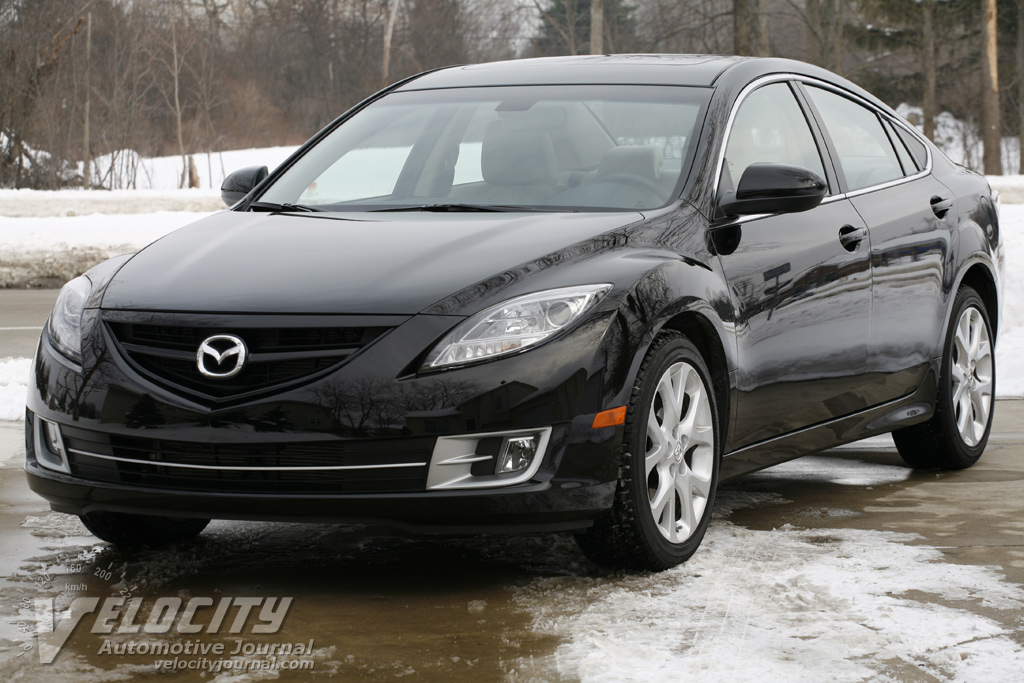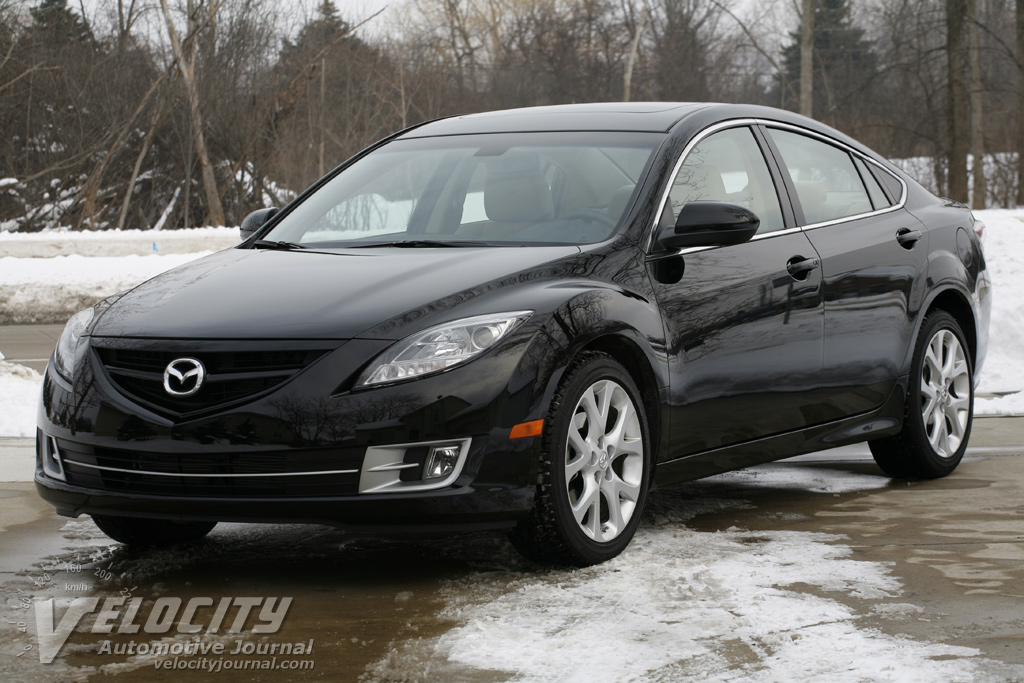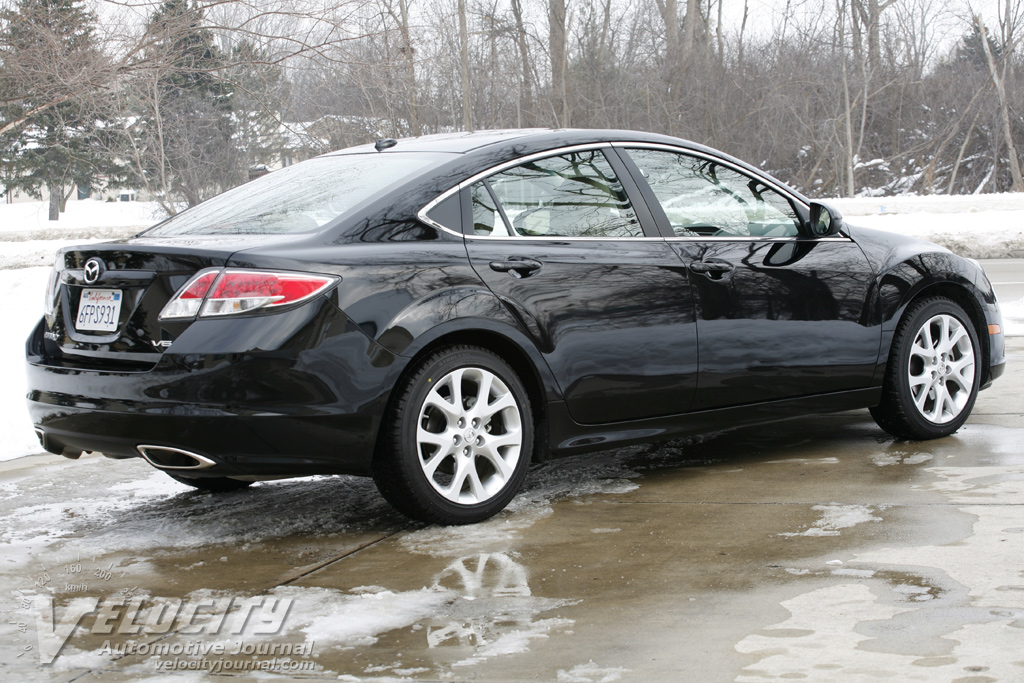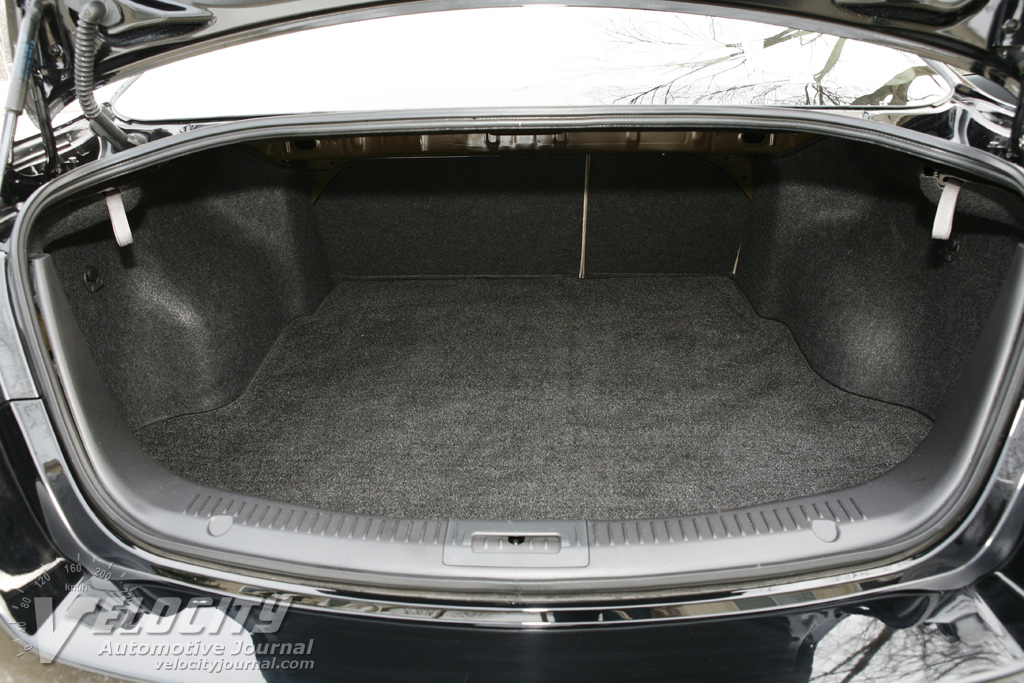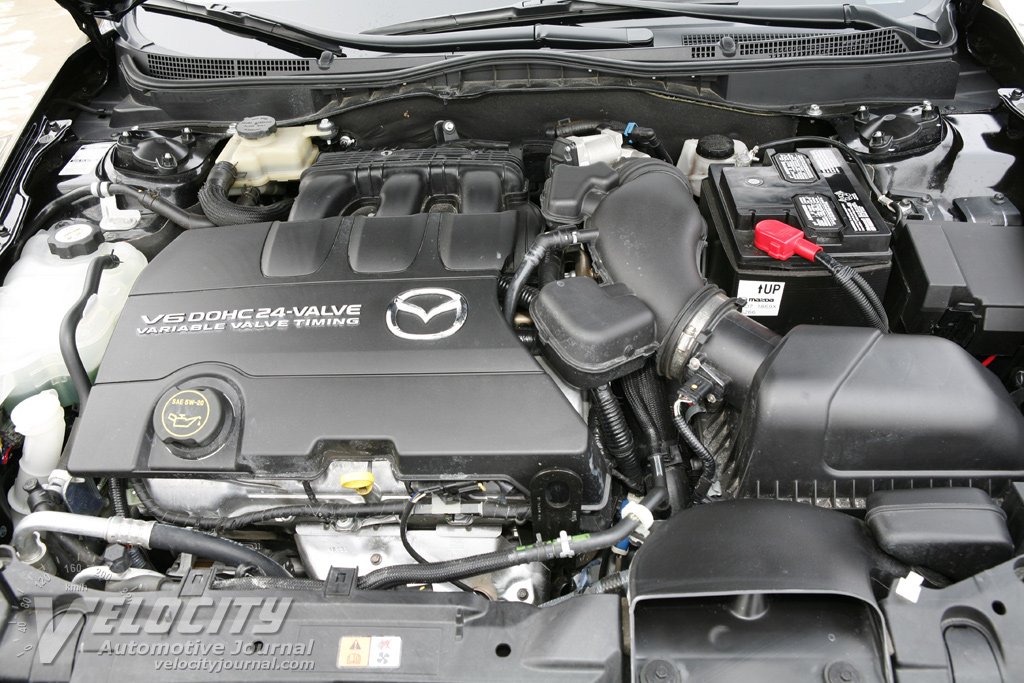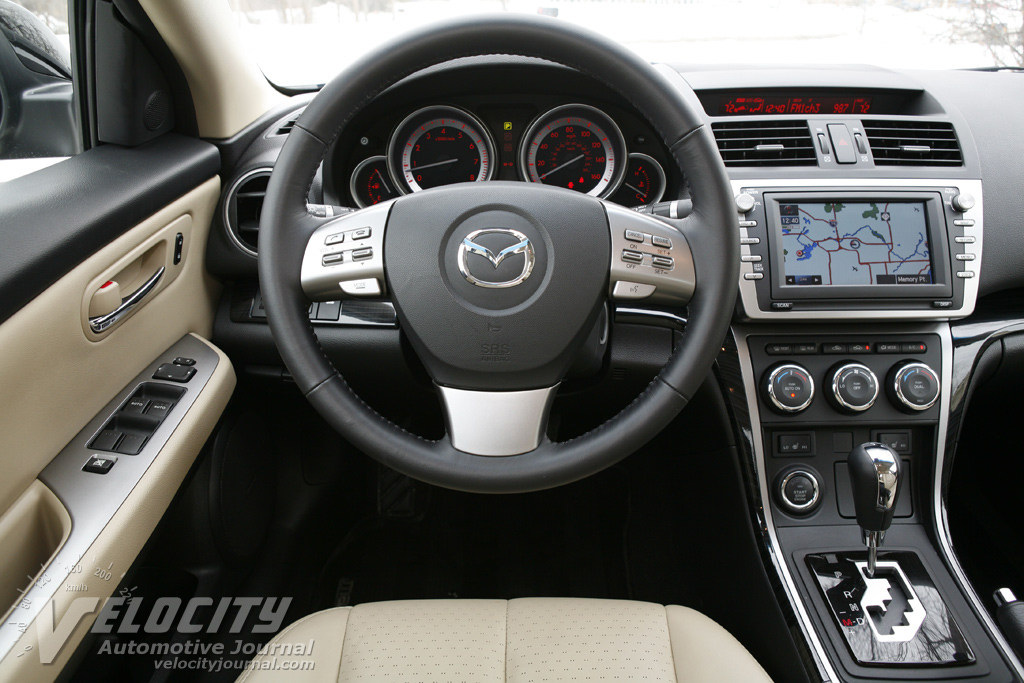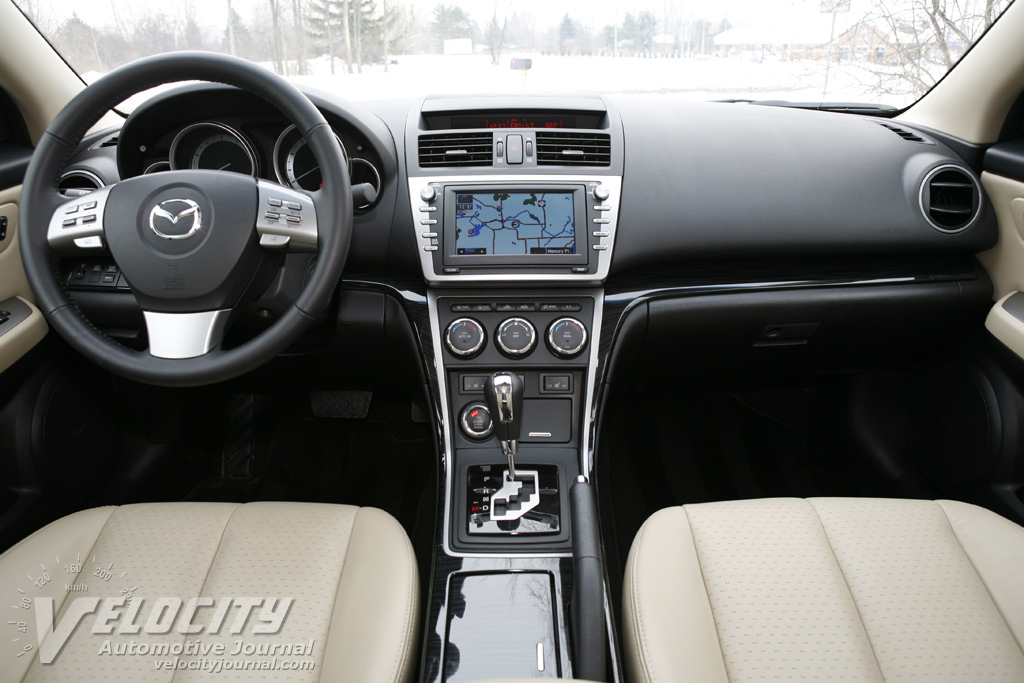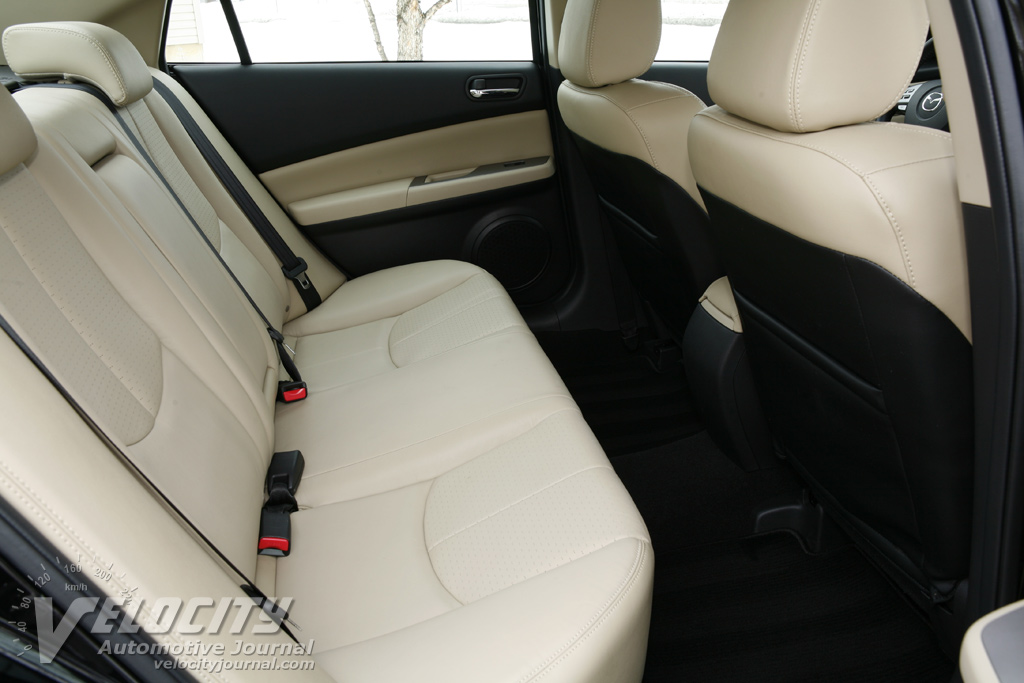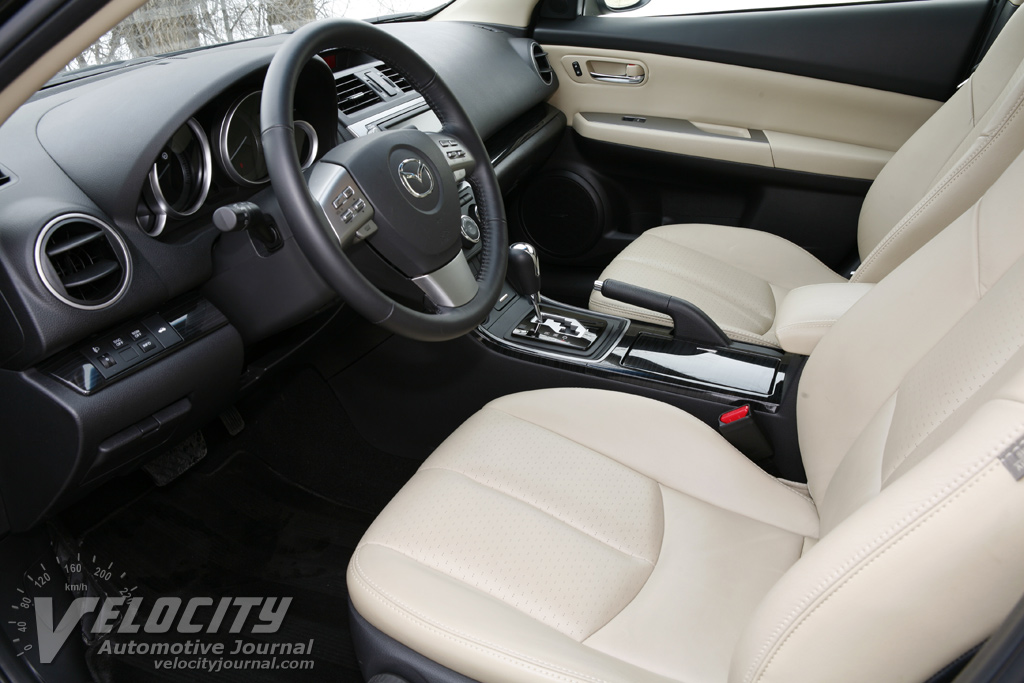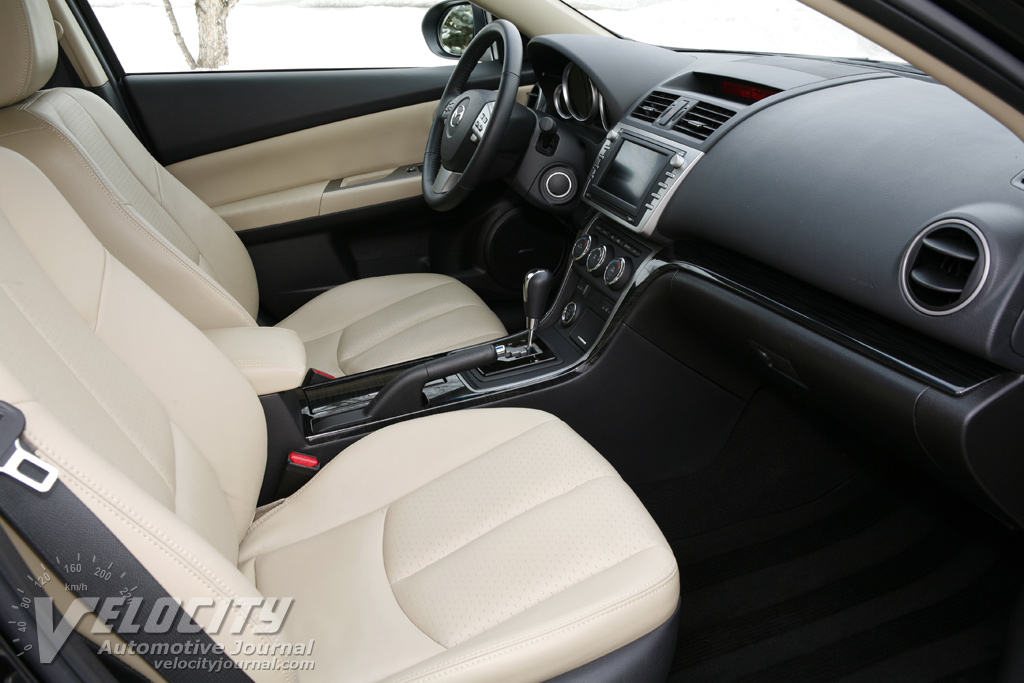2009 Mazda6s Grand Touring
01/30/2009
Shahed Hussain
Since the previous Mazda6 was introduced in 2003, the midsize sedan arena has become more cutthroat than ever. Witness the recently revamped Chevrolet Malibu, as well as the relatively fresh Honda Accord, Toyota Camry, and Nissan Altima, all redesigned in the past two years. In comparison, the old Mazda6 was too small to be a real alternative to these midsize sedans. So for 2009, the Mazda6 predictably re-emerges bigger than its predecessor. Powertrain choices include a new 2.5L inline-4 and 3.7L V-6, coupled to a 6-speed manual (2.5L), a 5-speed automatic (2.5L), or 6-speed automatic (3.7L).
As is increasingly common among mainstream family sedans, the various Mazda6 models cover a range of price points. The special order 2.5L Mazda6 i SV starts at $18,550; most dealers will likely stock the Mazda6 i Sport which has a base price of $20,250. Next up the ladder are the i Touring ($21,705) and i Grand Touring ($24,910) models. To get the 3.7L V-6 requires moving to the s Sport ($24,130), Touring ($25,075) or Grand Touring ($28,260) models. Our test vehicle was a Mazda 6 s Grand Touring, equipped with the Navigation Package ($2,000), LEV2 ULEV emissions ($100), and the Moonroof & Bose Package ($1,760); the total sticker price was $32,790 including the $670 delivery fee. We would probably opt for the less expensive s Touring model, and select the Convenience Package ($1,610), which would add up to $27,355 before taxes.
Where the previous Mazda6 suffered from a rather nondescript interior, its replacement incorporates soft-touch plastics, chrome accents, and polished metal in a stylish design. Attractive glossy plastic trim spans the dashboard and sweeps down to the center console. The instrument binnacle houses an 8,000 RPM tachometer and 160-MPH speedometer; smaller fuel and temperature gauges are on either side. On the spokes of the leather-wrapped steering wheel are audio, cruise control, Bluetooth, and voice command buttons. To the left of the steering column are buttons for stability control, blind spot monitor, and a rotary knob to adjust headlight aim. The blind spot monitor can assist inattentive drivers, but it beeps insistently often with no cause for alarm.
Above the center vents is a red backlit display shows radio stations and climate control settings. The optional navigation system adds a large LCD screen that does double duty for audio system functions. Commonly used controls such as volume and tuning knobs are easily accessible, but some of the other settings require using the touch screen. The LCD folds out to reveal the slot for the 6-disc CD changer. Mazda replaced the previous unwieldy navigation system interface with a user-friendly setup that is significantly more intuitive. For Touring and Grand Touring models, Mazda replaced the ignition key with a starter push button, located next to the 12V power outlet at the bottom of the center stack.
Mazda6 Sport and Touring models have cloth upholstered seats (a cloth/leather combination is optional on the Touring). Moving up to the Grand Touring trim level substitutes perforated leather for cloth; the plump cushions provide decent comfort and support, but the slippery leather causes occupants to slide around, while the relatively flat thigh bolsters do little to help. Eight-way power adjustments (with manual lumbar support) should ensure that most drivers can set the seat to their preferences. The front seats will accommodate passengers up to 6' tall, but the sweeping A-pillar may cause problems for taller occupants. The heated front seats, operated by rocker buttons on the center stack, warmed up quickly in winter weather. The rear seats have excellent thigh support and above average legroom, although headroom for passengers taller than 5-10" is limited.
To achieve parity with other midsize sedans, Mazda chose to enlarge both available engines; the base 170-bhp 2.5L inline-4 replaces the former 2.3L unit, while the 3.7L V-6 is substantially larger the previous 3.0L six. With 272-bhp @ 6,250 RPM and 269 lb.-ft @ 4,250 RPM, the new V-6 places this Mazda in the top tier among midsize sedans; refinement levels are above average, even at full throttle engine noise is never intrusive. Despite the impressive peak torque output, throttle response below 2,000 RPM is unimpressive, but improves significantly as the tachometer sweeps up the rev band. At highway speeds, the V-6 rewards the driver with excellent acceleration well beyond legal limits. According to the EPA, the V-6 is rated 17/25 MPG (city/hwy.). We managed to get 19 MPG in mostly urban driving; peak highway fuel economy was 27 MPG.
Previously Mazda offered a manual gearbox with the V-6, but a 6-speed automatic is now the sole transmission. A 6-speed manual is available with the base 2.5L engine. Although a manual gearbox option would be appreciated, most V-6 midsize sedans are sold with automatics, so Mazda's choice isn't surprising. The 6-speed unit has closely spaced ratios, which ensures nearly seamlessly shifts, even at full throttle. A manual shift mode allows the driver take control: slide the gated shifter left into manual mode and push forward for downshifts or pull back for upshifts. During our evaluation, we found no real reason to use the manual mode in normal driving, but Mazda's decision to retain manual shift capability should please some owners.
Instead of the typical MacPherson struts, Mazda used double wishbones for the front suspension, and its traditional E-type multi-link setup at the rear. Coil springs and dampers are at all four corners, with stabilizer bars at both ends. Brakes consist of vented discs with 11.8" diameter rotors (front) and solid 11.0" diameter rotors (rear). ABS, traction control, and Dynamic Stability Control are standard. Touring and Grand Touring models equipped with the V-6 get 18-inch alloy wheels shod with all-season P235/45R18 tires; our test vehicle had Bridgestone Blizzak winter tires, which are non-standard.
From a ride and handling perspective, Mazda aimed to please family sedan buyers. As a result, the suspension tuning favors a compliant ride that absorbs most bumps and potholes. The front and rear stabilizer bars minimize body roll, so the Mazda6 takes on winding roads with greater enthusiasm than most cars in its class. On the highway, the precise steering and stable chassis make this sedan a superb long distance cruiser. Steering effort is lighter than we prefer, but road textures are accurately transmitted to the leather-wrapped steering wheel. Torque steer is often an annoyance when a powerful V-6 drives the front wheels, but Mazda minimized its effects; even in first gear at full throttle, the steering wheel barely shudders. Despite Mazda's attempt to retain the sporty feel of the original Mazda6, its larger replacement doesn't quite match the nimble handling of its predecessor.
Mazda clearly had its sights on the Camry and Accord when it redesigned its midsize sedan. Other choices such as the Altima, Malibu, Passat, and Fusion are also worth considering in this crowded segment. What separates the Mazda6 from most other sedans is its stylish interior, which possesses the visual panache lacking from most competitors. As with most other family cars, loading up on options can push the Mazda's sticker price above $30K, which mostly reflects how mainstream sedans are now packed with technology formerly reserved for luxury brands. Mazda is no longer content to be a niche player, and the new Mazda6 now convincingly joins the top tier of midsize sedans

